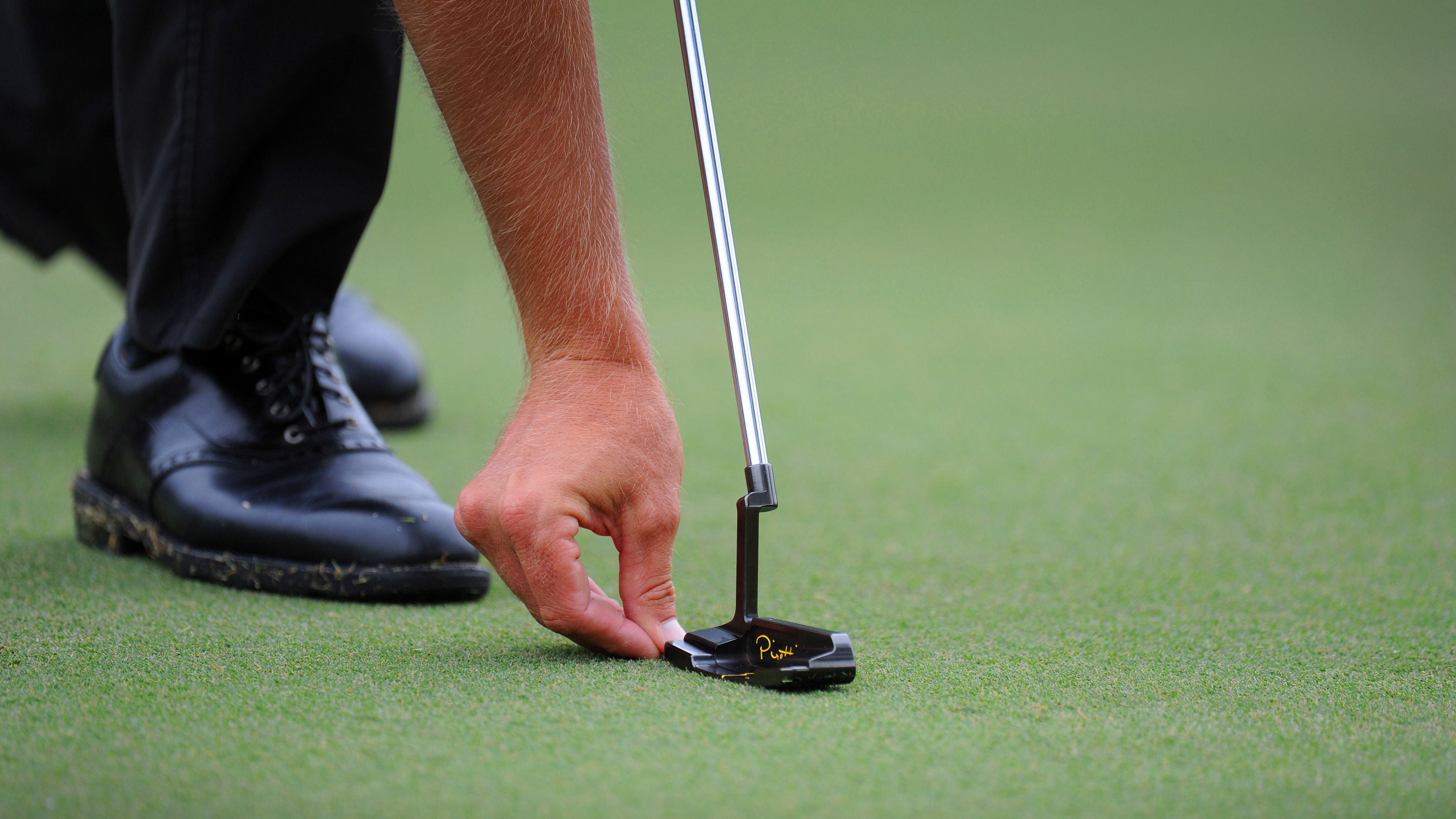
Under Rule 15.3, if your ball-marker on the putting green interferes with the line of another player, you should move it to somewhere where it won’t, either at your own instigation or at the request of that other player.

Most golfers would do this by measuring a putterhead length away from either ball or ball-marker (you may measure before marking the ball if you so wish) in whichever direction the other player has asked them to move it. It doesn’t have to be a clubhead length. You may use any fixed measurement, even a whole club length, but that would appear to be unnecessarily complicating something that doesn’t need to be complicated.

To move the ball or ball-marker, according to Clarification 15.3/1 you should align the clubhead, or whatever you are using to measure “with a fixed object (such as a blemish on the green or a sprinkler head) to ensure that when replacing the ball, the steps can be reversed and the ball be replaced on the spot from which it was lifted”. Many golfers will typically use a tree or fixed sign on the next tee as their reference point.
Having done that, what then happens if you forget to move your marker back before putting? With a slight lapse of concentration, it’s relatively easily done despite your - and usually your playing companions' - best intentions, for nearly all would step in if they saw you about to putt without moving it back. And it does happen! In the 2023 PGA Championship, Cameron Young did just this when he holed a two-footer for par on the 16th green in round two without moving his marker back, having been asked to move it aside by Tommy Fleetwood.
When the error came to light, that ‘par’ subsequently became a double-bogey as a result of Young playing from a wrong place in breach of Rule 15.3c and therefore incurring the general penalty under Rule 14.7a – so two strokes in stroke-play. In match-play, it would have been loss of hole.

Young did not have to correct his error, and whether or not you have to do that (in stroke play only) depends on whether or not the mistake is considered a “serious breach” (see Rule 14.7b) – i.e., one that gives you a significant advantage over playing from where you should have done, according to the Definitions.
Failing to move your ball back three to four inches on the putting green does not give you a significant advantage, and Young’s penalty suggests that such a mistake is not deemed a serious breach. It is therefore simply a two-stroke penalty in stroke-play rather than you having to correct the mistake by playing out the hole from the right place, with two strokes deemed more than adequate for the severity of the breach.
To further reduce the risk of this happening, some players will turn their marker upside down as a reminder when they have been asked to move it, or, if using a coin, will have it ‘heads up’ normally, but switch to ‘tails up’ if they have been asked to move it aside.







